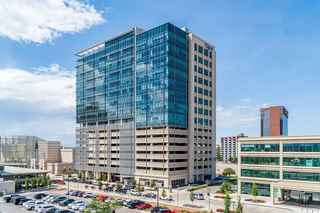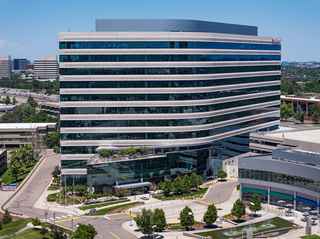
A new era of construction.
Traditional building systems for mid-rise structures often rely on steel or poured-in-place concrete. However, total precast offers a compelling alternative. A total precast structure means that both the structural (including stairs, elevator shafts, parking garage, etc.) and architectural elements of the building are prefabricated concrete. The advantages are numerous: accelerated project timelines, enhanced fire resistance, and significant economic and energy efficiency benefits. Prefabricated construction also provides flexibility in layouts, including accommodating headroom requirements and providing open spaces.
Let's delve deeper into the specific advantages of total precast construction.
The Advantages of Total Precast
- Speed and Efficiency: Prefabricated manufacturing is off-site in controlled environments, reducing construction time and minimizing weather-related delays. The building materials are shipped to the job site as soon as needed.
- Fire Resistance: Concrete offers exceptional fire resistance, safeguarding occupants and property.
- Cost-Effective: Prefabricated construction often leads to lower project costs due to streamlined processes and reduced labor requirements.
- Energy Efficiency: Concrete provides superior thermal performance, reducing energy consumption and improving indoor comfort.
- Design Flexibility: Prefabrication enables architects and engineers to create complex and innovative designs, from simple to intricate geometries on the exterior and flexible, open floor space within the building.
- Exterior: Prefabricated concrete's design versatility allows for almost any shape element, such as curved and radial sections, with flexibility in connection points and load paths.
- Interior: High-strength, prestressed concrete delivers exceptional load-carrying capacity, which can result in smaller sections, longer spans, or both when compared to other structural systems.
Total Precast for High-Rise Structures
While total precast is commonly used for mid-rise buildings, its application in high-rise construction is gaining momentum. Concrete's inherent strength and durability make it an ideal material for towering structures. Additionally, prefabrication offers several advantages for high-rise projects:
- Rapid Construction: Prefabricated elements can be installed quickly, accelerating project timelines and reducing construction costs.
- Enhanced Safety: Off-site manufacturing minimizes on-site hazards and improves worker safety.
- Superior Performance: Prefabricated concrete provides excellent structural integrity, fire resistance, and energy efficiency.
- Aesthetic Versatility: Prefabrication can be finished to achieve a wide range of architectural styles and finishes.
Additionally, factors such as wind loads, elevator capacity, and budget constraints often limit a building's height, regardless of the structural material. Concrete's versatility allows it to be tailored to various climatic conditions and cultural aesthetics.

Infinite Facade™: A Game-Changer for High-Rise Enclosures
Infinite Facade™ is a unitized building envelope system that seamlessly integrates insulation, glazing, and drywall-ready interiors into a single, prefabricated panel. This innovative solution offers numerous benefits for high-rise construction:
- Accelerated Construction: By enclosing the building under a single trade source, Infinite Facade™ significantly reduces construction time. A high-rise building can be completely enclosed in nearly half the time with Infinite Facade.
- Improved Quality: Factory-controlled manufacturing ensures consistent quality and precision, including window installation.
- Enhanced Energy Efficiency: The integrated design optimizes thermal performance and reduces energy consumption.
- Design Flexibility: Infinite Facade™ accommodates unlimited architectural styles and design concepts.
Total precast, coupled with innovative technologies like Infinite Facade™, is revolutionizing high-rise construction. By offering speed, efficiency, and superior performance, these solutions are enabling the development of taller, more sustainable, and visually striking buildings. As the construction industry continues to evolve, prefabrication will undoubtedly play a pivotal role in shaping the future of urban skylines.




